The brain is the portion of the central nervous system that is enclosed within the cranium, continuous with the spinal cord, and composed of what is known as gray matter and white matter. It is the primary center for the regulation and control of bodily functions, receiving and interpreting sensory impulses, and transmitting information to the muscles and organs of the body. The brain is a very complicated organ as well as the most vital one in the human body. The brain controls all bodily functions, thoughts, movements, and senses. The brain is the control center for movement, sleep, hunger, thirst, pain, and all other vital activities that help us sustain life.
The frontal cortex is the area that gives us the ability to reason, plan, understand parts of speech, have mobility, express our emotions as well as having the ability to problem solve. The cerebral cortex is the part of the brain that accounts for ÃÂ85 percent of the brainÃÂs weightÃÂ (Berk, 2008, p.171)
since it contains the ÃÂgreatest number of neurons and synapsesÃÂ (Berk, 2008, p.171) that is associated with the higher functions of the brain. These functions include ÃÂvoluntary movement, coordination of sensory information, learning and memory, and the expression of individualityÃÂ (Dictionary.com).
Each part of the brain is programmed to perform a specific duty if malformations or injuries occur within one of these areas it could have an effect on our abilities to function and learn new things. The cerebral cortex is also the area of the brain in which the basal ganglia is located. The basal ganglia are ÃÂgroups of small clusters of cells deep within the brainÃÂ (Williams, 2007, para. 2) that helps in managing the movement of the body. When damage occurs to the basal ganglia cells it causes problems with one's ability to control speech, movement, and posture. A person with basal ganglia dysfunction may have difficulty in starting, stopping, or sustaining movement. Depending on which area is affected, there may also be problems with memory and other thought processes as well.
ParkinsonÃÂs disease is caused when the neurons that produce the neurotransmitter dopamine die off in the basal ganglia, an area of the brain that controls body movements. ParkinsonÃÂs disease was first discovered more than 180 years ago which now is affecting more than tens of millions people in the world (Filippo et al., 2008, para. 1). The brain can no longer control the body and people begin to experience ÃÂweakness, tremors, rigidity of the limbs, poor balance, and difficulty in initiating movementsÃÂ (Carlson, 2010, p. 89). The loss of function is ÃÂcaused by a mutation of a gene on chromosome 6ÃÂ (Carlson, 2010, p. 537) making it a recessive disorder. There are other mutations that are involved in inheriting ParkinsonÃÂs disease which cause a mutation in the mitochondrial DNA which is inherited from the mother (Carlson, 2010, p. 538). Treatment of the disease is very difficult since it involves increasing the amount of L-Dopa produced by the brain which will in turn produce and release more dopamine back into the brain which over time only causes the symptoms to become worse over time. There is medication available that does alleviate the symptoms associated with the disease.
Huntington's disease is caused when a genetic mutation causeÃÂs an over-production of a neurotransmitter called glutamate, which kills neurons in the basal ganglia. HuntingtonÃÂs disease is a progressive disease that is due to an ÃÂinherited neurodegenerative disorder characterized by progressive motor, cognitive and behavioral deficitsÃÂ (Jurgens et al., 2008, para. 1) which eventually causes death. The symptoms of HuntingtonÃÂs disease include motor abnormalities such as hyperkinesia and hypokinesia which involve an abnormally diminished use of muscular function or mobility as well as an abnormal amount of uncontrolled muscular actions, as well as psychiatric and cognitive problems. As a result, people twist and writhe uncontrollably. At the present time there is no treatment available to individuals who suffer from HuntingtonÃÂs disease but with new studies in animal research studies are being conducted on a treatment that has shown a decrease in the ÃÂsize of inclusion bodies in striatal neurons, prolonged the life of the striatal neurons, and reduced the animalsÃÂ motor symptomsÃÂ (Carlson, 2010, p. 543) by blocking the production of the mutant gene.
Neurodegenerative diseases are characterized by the ÃÂneurodegenerative changes or apoptosis of neurons involved in networksÃÂ (Hou & Hong, 2008, para. 1), which are important to specific physiological functions. With scientists discovering new advances in stem cell biology it has raised the hope and possibility for the therapy of neurodegenerative diseases. Scientists have recently begun to utilize stem cells as a way to treat neurodegenerative diseases of animals. Stem cells are unspecialized cells found in ÃÂfetuses, embryos, and some adult body tissues that has the potential to develop into specialized cells or divide into other stem cellsÃÂ (stem cells, Dictionary.com, n.d.). With the recent progress and prospects of the various stem cells used for research, which include ÃÂembryonic stem cells, mesenchymal stem cell and neural stem cellsÃÂ (Hou & Hong, 2008, para. 1), it raises the hope for effective treatments of neurodegenerative diseases in humans which include ParkinsonÃÂs and HuntingtonÃÂs disease as well as several others. By discovering and understanding new ways to treat neurodegenerative diseases it could slow down the onset of the diseases as well as finding a cure to prevent the disease from occurring ever again. I believe that with continuous development on stem cell biology that stem cell therapy with prove to be a useful component in curing or slowing down the onset of many diseases and illness that humans suffer from.
References:Berk, L. (2008). Infants, children, and adolescents.(6th ed.). Boston: Pearson.
Carlson, N. (2005). Foundations of Physiological Psychology.(6th ed.) Boston: Pearson.
Carlson, N. (2010). Physiology of Behavior.(10th ed.). Boston: Pearson.
Di Filippo, M., Picconi, B., Tozzi, A., Ghiglieri, V., Rossi, A., & Calabresi, P. (2008).
The endocannabinoid system in Parkinson's disease. Current PharmaceuticalDesign, 14(23), 2337-47. Retrieved December 5, 2009, from ProQuest Health andMedical Complete. (Document ID: 1548583031).
Hou, L., & Hong, T. (2008). Stem cells and neurodegenerative diseases. Science in ChinaSeries C: Life Sciences, 51(4), 287-294. Retrieved December 5, 2009, from ProQuestHealth and Medical Complete. (Document ID: 1896760641).
Jurgens, C., Van de Wiel, L., Van Es, A., Grimbergen, Y., Witjes-ané, M., Van derGrond, J., & et al. (2008). Basal ganglia volume and clinicalcorrelates in 'preclinical' Huntington's disease. Journal of Neurology, 255(11), 1785-91. Retrieved December 5, 2009, from ProQuest Health and Medical Complete.
(Document ID: 1630733671).
Samadi, P., Rajput, A., Calon, F., Grégoire, L., Hornykiewicz, O., Rajput, A., & et al. (2009). Metabotropic glutamate receptor II in the brains of Parkinsonianpatients. Journal of Neuropathology and Experimental Neurology, 68(4), 374-82. Retrieved December 5, 2009, from ProQuest Health and Medical Complete.
(Document ID: 1861883721).
stem cells. (n.d.). The American Heritageî Science Dictionary. Retrieved December 06,2009, from Dictionary.com website: http://dictionary.reference.com/browse/stem cellstopectomy. (n.d.). Dictionary.com Unabridged (v 1.1). Retrieved December 5, 2009,from Dictionary.com website: http://dictionary.reference.com/browse/topectomyVan der Burg, J., Björkqvist, M., & Brundin, P. (2009). Beyond the brain: widespreadpathology in Huntington's disease. The Lancet Neurology, 8(8), 765-74. RetrievedDecember 5, 2009, from ProQuest Health and Medical Complete. (DocumentID: 1796362041).
Williams, D. (2007). Basal ganglia disorders. Retrieved on December 5, 2009 fromDiscovery Health website:http://health.discovery.com/encyclopedias/illnesses.html?article=3037
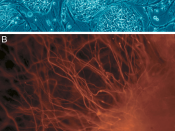
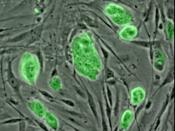
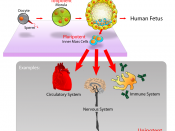

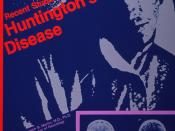
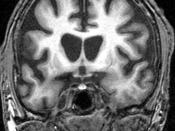
Very good paper
The writer explains the inner workings of the mind and what causes it to act in certain situations. Very good and informative.
0 out of 0 people found this comment useful.